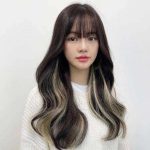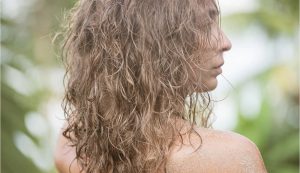
What Is A Hair System? An Ultimate Guide
What is a hair system?
A hair system is a hairpiece that is typically made of high-quality synthetic or human hair and is used to address hair loss and partially conceal baldness.
It goes by many names, including toupee, strand-by-strand insertion system, and hairpiece. Although hair systems are typically associated with men, women can also use them to extend their natural hair or conceal a partially exposed scalp.
Here’s the scoop.
Table of Contents
What Materials Make Up A Hair System?
These days, the bases of hair systems are made of either polymers or mesh fabric.
Mesh Fabric
Mesh is frequently used to create a good product’s hairline and is typically made of polyester or nylon. They can be applied throughout the entire system, giving everything a realistic, natural appearance. Mesh fabric, however, cannot be used for extended periods of time.
Pros
- The hairline is undetectable and natural.
- Material is soft, breathable, and lightweight.
Cons
- More pricey
- Very delicate and less durable
- Needs to be replaced more frequently
Polymers
A material that resembles skin is made of silicone or polyurethane polymers. Polymer-based hair restoration methods typically have stronger construction.
Pros
- Can be less costly than meshes
- Highly durable
- Easy attachment
Cons
- Can be extremely hot and uncomfortable
- Has a less natural look, unless the hairline is made of lace
How Long Will Your Hair System Last?
Your hair system’s lifespan is difficult to estimate. It is dependent on a variety of elements, such as the substrate and maintenance practices for your system. There are a few things you can do to extend the life of your hair system:
- Avoid hot water, blow-dryers, and shampoos with harsh ingredients
- Use a satin pillowcase to minimize friction
- Try not to overdo it on products • Avoid hair care products that contain alcohol
- Use conditioner every time you shampoo Similarly, there are several factors that can cause your hair system to decline more quickly
- Treating it roughly
- Brushing too hard or too often
- Brushing hair when wet
- Using harsh shampoos
- Shampooing too often
- Allowing products to build up
- Overly chlorinated pools
Who Utilizes A Hair System?
Living with hair loss can be extremely difficult emotionally. The majority of our clients experience hair loss for a variety of reasons, including genetic predisposition, an unbalanced diet, radiation, stress-related hair pulling, chemotherapy, or any other type of alopecia or abnormalities of the scalp. Therefore, those who are experiencing hair loss can use a hair system to regrow their hair completely without undergoing an uncomfortable or costly procedure. See more about What Is Fairy Hair?

The Advantages Of A Hair System
Selecting the best hair system for yourself can occasionally be challenging, especially when there are many options available. But still, there are many advantages in certain situations that you should definitely give it a shot:
Immediate Results
The best part of a modern hair system is that it will instantly change the way you look! Additionally, if the quality is high enough, you can wear your hair system for a considerable amount of time by customizing it to suit your needs.
Lower Cost
Getting a hair system is much less expensive than getting a hair transplant, and it can also help you avoid some of the risks associated with the latter, such as a protracted recovery period, subpar results, and postoperative complications. A hair system is still within the range of what most people can afford, despite the fact that it frequently needs washing, repairing, and replacement. Even better, you can purchase it in bulk, giving you the freedom to change how you look and a backup in case something goes wrong with one system.
A Patient`s Friend
Hair systems work wonders for people who are losing their hair due to serious medical conditions like thyroid disease or cancer. They have almost no hair left because they are physically unfit and their bodies may be too fragile for a hair transplant. Alopecia totalis and alopecia areata are just a couple of the other conditions for which it is appropriate.
Tips For Choosing A Hairstyle For Your Hair System
Hair systems are frequently made specifically for each wearer based on their needs. It is crucial to take into account a number of crucial factors when designing your hair system in order to pick a hairstyle that is both functional and flattering for you.
Here are the most essential factors that you should take into consideration when choosing a hairstyle for your hair system that will look all-natural:
Base Size
The size of the hair system’s cap is referred to as the base size. Partial, regular, oversize, and full cap are the four categories into which it is typically divided. Partial size covers areas of hair loss that are equal or smaller than 4″ x 4″. Regular size, on the other hand, are for those areas that are larger than 4″ x 4″ and up to 10″ x 8″. As it covers the top of the head from the front hairline to the crown, this is the most popular option for men who have a traditional pattern of baldness.
If you have a hair loss area that is larger than 10″ x 8″ and up to 10″ x 10″, an oversize cap is the one for you. This hat covers the head from the front hairline to the back and lacks a sideburn area. Full cap hair systems are your best bet if you have completely lost your hair. These hair systems cover the entire head, including the sideburn and nape regions.
You must pick a hair system with the appropriate base size if you want to have a great hairstyle that looks absolutely natural on you. Keeping the hair length around the perimeter of the hair system longer than necessary to cover the connection between your real hair and the base material is also strongly advised if you only have hair loss on the top of your head. With oversize or full cap hair systems, longer hair lengths are also recommended.
Base Material
When purchasing a hair system, in addition to choosing the appropriate base size, you might also want to be sure that the base material is right for you. It is extremely recommended to first check on the three main components of a base: front, top and crown, sides, and back, before deciding on the base material that is best for you and the hairstyle that suits you.
The best base materials for the front hairline area are thin skin and French lace. You can get a hairline that looks natural because they are thin, undetectable, and free of knots. You can create a brushback hairstyle that looks fantastic with the use of these materials. In addition to thin skin and French lace, folded lace, clear PU, and skin with gauze are some of the typical materials used in the front area.
The most popular base materials, however, for the top and crown region are lace, thin skin, and monofilament. The base materials for the top and crown areas do not have as much of an impact on the hairstyle as the front area does because the strand of hair typically covers the base and any nearby hair knots. However, you should choose a transparent base material, such as clear thin skin or lace, if you want a part hairstyle with the base and knots exposed.
Additionally, thin skin, skin with gauze, clear PU, and PU coating are the typical base materials used for the sides and back. Hair is typically required to cover the edge of the hair system on materials with relatively thicker edges, such as skin with gauze and PU coating. To better fit the thick edge of the materials and lessen their visibility, the suggested hair length for these areas should be a little longer.
Ventilation Methods
Ventilation has a significant impact on the appearance and longevity of your hair replacement system. Ventilation describes the technique used to fasten the hair to the framework of a hair system. It also describes the manner in which the hair is attached to the base. The most common ventilation methods are V-looping, knotting, and injection, though there are other methods as well.
V-looping
In V-looping, the hair is injected into and out of the skin in order to sew it to the roots in a shape that resembles a V or U.
Although the skin base of the V-looped style is free of knots, the hair strands are not all facing the same way. The poly layer here can be much thinner because this technique essentially makes the hair return with looping. The hairline appears more natural the thinner the PU is.
Injection Ventilation
For injection ventilation, the base is placed on a mold and the hair is injected into the base using a specialized needle.
Both flat and lifted injection ventilation are possible. By flat-injecting the hair, the base is injected into the hair at a sharp angle, causing the hair to fall naturally to one side. With lift injection, the hair is injected into the base at a right angle, making it easy to comb in any direction and perpendicular to the base.
Knotting
On the other hand, when under-knotting, the hair is wrapped around the mesh material in tiny knots of various sizes, including double, half, and single knots.
Given that they are tied twice with a few hairs each, double knots are the strongest, whereas half knots are the smallest and most concealable. The best option for any freestyle hair pattern is a single knot.
Hair Replacement Explained
In order to achieve realistic results that are also incredibly durable, advanced hair replacement products combine a polyurethane membrane with actual human hair. The finest human hair is used to house artificial skin that is micro-thin and is implanted there. The system is then bonded to the scalp.
Making your hair system specifically for you may take six to eight weeks after the initial consultation. You will be able to shower, swim, and participate in sports as usual, and the front hairline will be almost undetectable. You can expect to get 15 weeks of wear on average before you need a bolster treatment to keep your system functioning properly.
By placing a mesh between the scalp and natural hair, intralace systems function. For women who have thinning or moderate to severe hair loss, intralace panels are added that also contain real human hair. The Intralace system requires maintenance every six to eight weeks, and depending on the particular style, costs anywhere from £1,000 to £2,800.
The advantages of non-surgical hair replacement include:
- Suitability for all
- Non-invasive procedure
- Instant results
- Reversible process
- Confirmed success
- Low costs when compared to hair transplants
Hair Replacement System Cost
The cost will vary depending on where you buy your hair system, whether you choose ready-to-wear or customized, and whether the coverage is partial or complete. With full coverage options costing up to $1,200, a partial coverage hair system can cost as little as $870.
A high-profile, well-regarded salon’s non-surgical hair replacement service will typically cost more than $200 for a stock or custom system fit. Hairpieces can be attached to natural hair in a variety of ways, including bonding, beading, cabling, fusion, and weaving. There will be various price ranges for each technique.
Conclusion
A hair system is a partial wig or hairpiece made of high-quality human hair or synthetic material that is worn to conceal bald spots or for theatrical effects. Hairpieces, toupees, or units are some common names for it. Although hair systems are typically associated with men, many women may also use them to extend their natural hair or conceal an imperfectly covered scalp.
Hair systems are frequently made specifically for a customer’s needs. They are secured to the wearer’s head with tape or an elastic band. Hair color, density, texture, and straightness are just a few of the factors that a good hair system should perfectly match to the customer’s hair.
Regarding your reading, I thank you.






